The best AI art generators use advanced machine learning algorithms to convert text prompts into digital art, letting users of all skill levels explore their imagination without a traditional artistic background. These AI tools democratize art creation, making it accessible to a broader audience.
What is the best artificial intelligence art generator? To find out, I evaluated the most popular options today to see how they compare on output quality, accuracy, user protection, and ease of use. Here are my picks:
- Stable Diffusion: Best overall
- Canva: Best for social media graphics
- DALL-E 3: Best for realistic images
- starryai: Best for artistic style diversity
- Midjourney: Best for imaginative artwork
- Leap AI: Best for personal design projects
- Prodia: Best for building content libraries
- Jasper Art: Best for marketing image generation
Featured Partners
Best AI art generators comparison
This comparison table shows a quick overview of the best AI art generators, their overall ratings, accuracy, artistic style diversity, availability of free versions, and pricing details.
| AI art generator | Overall rating | Image accuracy | Diverse artistic styles | Free version | Starting price |
| Stable Diffusion | 4.5/5 | Excellent | Yes | Yes | Starts at $20 per user, per month (Stability AI membership) |
| Canva | 4.4/5 | Excellent | Yes | Yes | $15 per user, per month |
| DALL-E 3 | 4.4/5 | Great | Yes | Yes | Included in ChatGPT; $0.04 per image |
| starryai | 4.4/5 | Great | Yes | Yes | $15 per month |
| Midjourney | 4.1/5 | Excellent | Yes | No | $10 per user, per month |
| Leap AI | 3.8/5 | Great | Yes | Yes, with restrictions | $99 per month |
| Prodia | 3.4/5 | Fair | Limited | Yes | $5 per month |
| Jasper Art | 3.3/5 | Great | Yes | No | $49 per user, per month |
Each AI art generator has its unique strengths and features, but all stand out in capabilities, affordability, and accessibility. Continue reading to learn more about each AI art generator’s use case, pricing, and key features, or skip ahead to my scoring criteria.
TABLE OF CONTENTS
Stable Diffusion
Best Overall
Overall Rating: 4.5/5
- Core features: 4.2/5
- Cost: 5/5
- User protection and content moderation: 5/5
- Ease of use: 3.8/5
- Customer support: 4.4/5
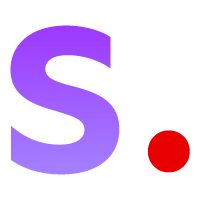
Stable Diffusion is a leading AI art generator developed by Stability AI that caters to a wide range of users, from casual creators to professional artists. This AI art generator stands out for its accessibility through multiple platforms, including Stable Assistant, DreamStudio, and Hugging Face, making it easy for anyone to create AI images without advanced technical knowledge.
Stable Diffusion also has an open-source version that can be installed locally, giving you offline access and greater control over your creative process. This AI art generator enables you to adjust image prompts, fine-tune models, and control settings for better-quality outputs.
On the downside, Stable Diffusion’s generated images can sometimes be inconsistent and may not fully align with the given prompt. If you prefer a more consistent AI tool with high prompt accuracy, try Midjourney instead.
Product design and AI-generated output
Stable Diffusion is accessible through multiple platforms, with DreamStudio being one of the most popular due to its clear and intuitive layout. DreamStudio simplifies selecting image styles, adding image prompts, and inputting negative prompts to exclude unwanted elements. You can also reuse prompts and make variations of the AI-generated images, enhancing the overall creative experience.
This AI art generator produced four richly detailed and eye-catching outputs, mostly remaining faithful to the given prompt. However, these images have flaws, like the irregular window patterns and unrealistic human fingers.
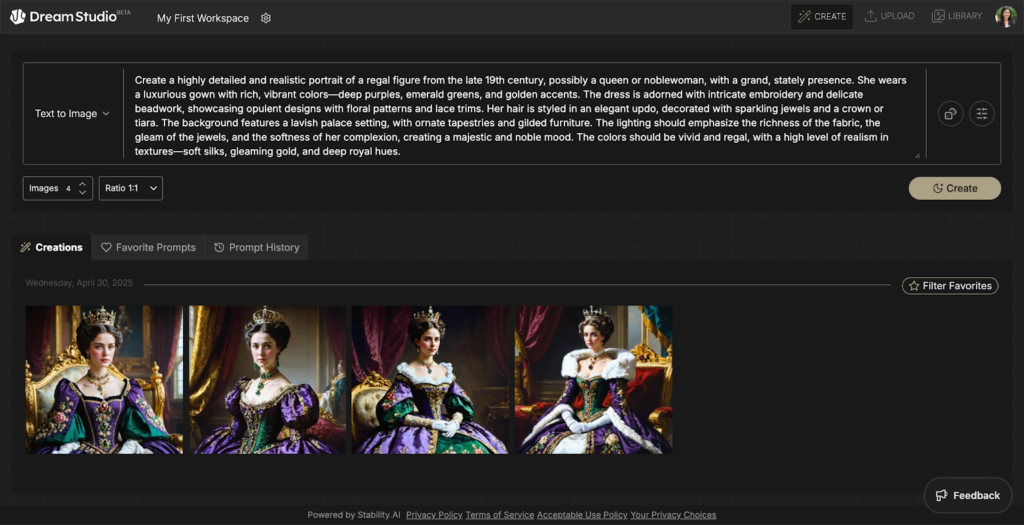
Why I picked Stable Diffusion
Stable Diffusion tops my list of best AI art generators because it brings much more than highly detailed images. The level of accessibility it offers is impressive, providing access to a broader audience including users without prior experience working with AI image generation tools. Its multiple pricing options and free community license enable small businesses and individual users to make AI art on a budget.
Stable Diffusion is an open source and has an active online community where users collaborate, share, and draw inspiration from each other’s creations. If you have Stable Diffusion installed on your computer, you can access the tool offline and your images will remain completely private. These attributes make the AI art tool an outstanding choice for anyone interested in AI-generated art.
Pros and cons
| Pros | Cons |
|---|---|
| Multi-platform accessibility | Open-source version requires technical knowledge to get started |
| Diverse array of styles | Slow image generation process |
| Offline access | Slow customer support response |
Pricing
- Free: For researchers, small businesses, and non-commercial use
- Stability AI membership: Starts at $20 per user, per month
- Usage-based pricing: $0.01 per credit
Learn more on Stability AI’s pricing page.
Features
- Multi-platform availability
- Offline access
- Extensive image customization
- Modifiable open-source model
Canva
Best for Social Media Graphics
Overall Rating: 4.4/5
- Core features: 4.4/5
- Cost: 3.3/5
- User protection and content moderation: 5/5
- Ease of use: 5/5
- Customer support: 4.7/5

Canva is a widely used graphic design platform that features a built-in AI art generator known as Magic Media. By simply entering prompts, users can create custom images for various purposes, including social media posts, marketing materials, and educational content. Magic Media also offers the flexibility to explore different image styles, color palettes, and backgrounds, making it easy to elevate and personalize your designs.
A key feature that sets Canva apart from other AI art generators is Canva Shield, a collection of trust, safety, and privacy tools for individuals, teams, and enterprises using Canva. Canva Shield includes an indemnification policy that protects users against legal claims related to generative AI content. With this in place, businesses can utilize the assets within the platform without the fear of being caught in intellectual property disputes.
Canva provides a rich library of templates and creative elements that you can combine with AI-generated images. However, Canva’s customization options are limited compared to its competitors. If you’re looking for an AI art generator with extensive customization, consider Stable Diffusion.
Product design and AI-generated output
Canva has a user-friendly interface with clearly labeled options to help you fine-tune your design. It lets you resize, share, or download your image in different formats without having to navigate to another page, increasing operational efficiency.
Image generation in Canva is also straightforward — simply type in your detailed text prompt or upload a prompt, select the style and orientation, and wait for the system to create your image.
While the images are not perfect, Canva makes it easy for users to add finishing touches to get the image they visualized.
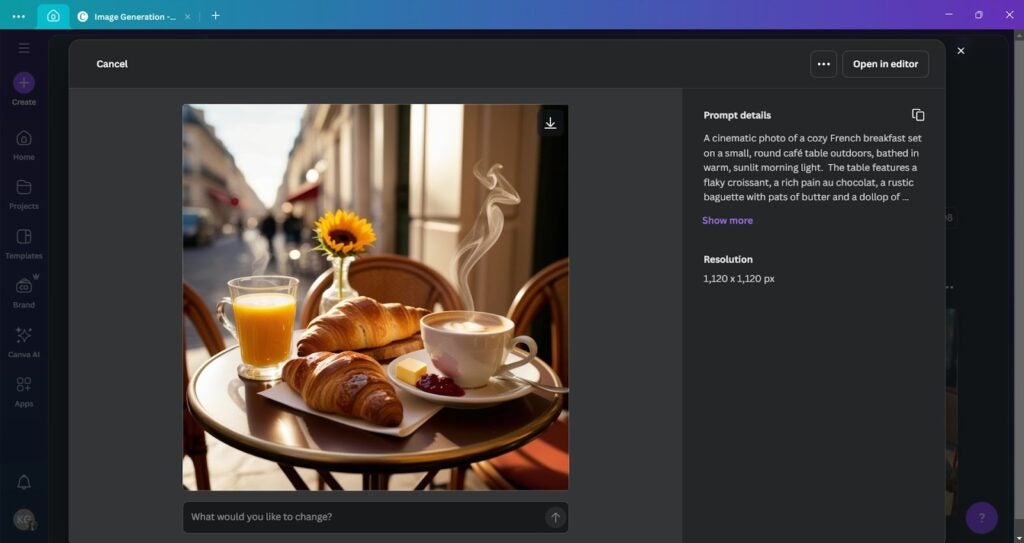
Why I picked Canva
Canva is one of the best AI art generators because of its ease of use and reliable user protection policies. It enables individuals, with or without an artistic background, to create professional-looking images. In addition, its user protection policies, particularly Canva Shield, make sure creations remain secure.
Pros and Cons
| Pros | Cons |
|---|---|
| User-friendly | Usage limits, even in paid plans |
| Robust user protection | Occasional output inaccuracies |
| Design templates and creative elements | Limited customizability compared to competitors |
Pricing
- Free version: 50 images lifetime
- Pro: $15 per user, per month
- Teams: $10 per user, per month
- Enterprise: Custom pricing
Learn more on Canva’s pricing page.
Features
- High-resolution images
- Indemnification
- Built-in image editor
- Text-to-video generator
DALL-E 3
Best for Realistic Images
Overall Rating: 4.4/5
- Core features: 4.2/5
- Cost: 3.5/5
- User protection and content moderation: 5/5
- Ease of use: 3.8/5
- Customer support: 5/5
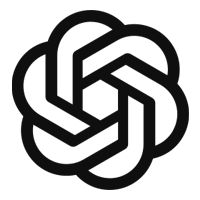
DALL-E 3 is the latest text-to-image AI art generator from OpenAI. It allows users to create detailed images for numerous applications. It can produce concept art, social media illustrations, and custom graphics. Unlike traditional text-to-image systems that may overlook some details in the prompt, DALL-E 3 has an advanced grasp of context, generating images that align with your instructions with high accuracy.
DALL-E 3’s integration with ChatGPT allows users to refine their prompts and adjust images in real time. In addition, OpenAI prioritizes ethical AI and includes robust safety measures to restrict the generation of violent, adult, or hateful content. It also contains mitigations to avoid generating images of public figures by name and gives creators the option to either allow or restrict the use of their images in training future models.
DALL-E 3, however, doesn’t have pre-defined art styles and lacks features for batch processing. You can only generate one image at a time, and you must describe your desired style directly in your text prompt in detail to achieve the intended output. If you prefer an AI art generator that has pre-made artistic style options and allows batch processing, consider Jasper Art.
Product design and AI-generated output
DALL-E 3, accessible via ChatGPT, has a minimalistic interface that focuses on simplicity. Its main feature is a text box where you can type your prompt and upload images or files. It also allows you to continue your previous conversations with the AI, as it stores your past exchanges, which you can view in the left corner of the page.
Below is an example of an image generated using DALL-E 3. It returned an image true to the prompt and made some modifications on its own to refine the output.
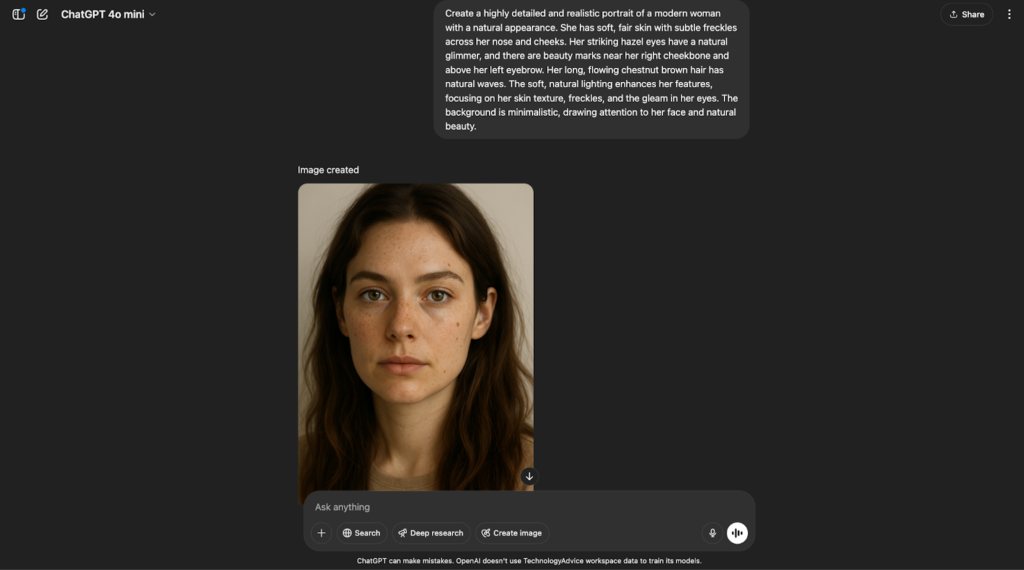
Why I picked DALL-E 3
DALL-E 3 is a strong contender for the best AI art generators because of its rich capabilities, consistent lifelike outputs, and OpenAI’s emphasis on responsible use of artificial intelligence. Its integration with ChatGPT also streamlines the image creation process for beginners, allowing them to make detailed and polished visuals through conversational prompts.
Pros and cons
| Pros | Cons |
|---|---|
| Interprets complex prompts with nuance | No predefined art styles; requires users to describe the desired art style in text prompt |
| Creators can keep their images from training future AI models | No batch processing |
| ChatGPT integration | Limited customization options |
Pricing
- Free version: Included in ChatGPT; two images per day
- Standard quality: 1024×1024 resolution, $0.04 per image; 1024×1792 and 1792×1024 resolutions, $0.08 per image
- HD quality: 1024×1024 resolution, $0.08 per image; 1024×1792 and 1792×1024 resolutions, $0.12 per image
Learn more on OpenAI’s pricing page.
Features
- Complex prompt interpretation
- ChatGPT integration
- Inpainting and outpainting
- Creative control
starryai
Best for Artistic Style Diversity
Overall Rating: 4.4/5
- Core Features: 4/5
- Cost: 5/5
- User Protection and Content Moderation: 5/5
- Ease of Use: 3.8/5
- Customer Support: 3.8/5
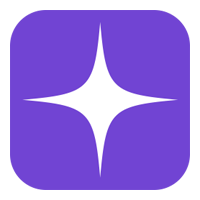
starryai is an AI art generator that converts simple text prompts into highly customizable visual artworks. You can explore many styles, including anime, pixel art, photorealistic, and abstract, allowing for significant creative expression for different user needs. It also lets you adjust image parameters to tailor the generated images to fit your vision. Aside from its Text to Art feature, the platform supports blending AI-generated images with your own digital creations through its Image Fusion capability. This integration with user-provided content is another functionality that distinguishes starryai from other AI art generators. It gives you greater control and customization over the final output.
Like other AI tools, starryai has some drawbacks. These include its slow image generation process and a less intuitive interface compared to its competitors. Canva is an excellent alternative, as it produces images faster and has a user-centric design.
Product design and AI-generated output
At first glance, starryai has a clean and simple interface with important design-related settings, such as style selection, canvas size, and image quality. However, some features are hidden behind additional clicks, making it difficult for users to immediately access the full scope of what the platform can offer.
The image below shows starryai can effectively follow complex prompts. It also allows you to modify the generated image — you can enhance it, make variations of it, or remove its background.
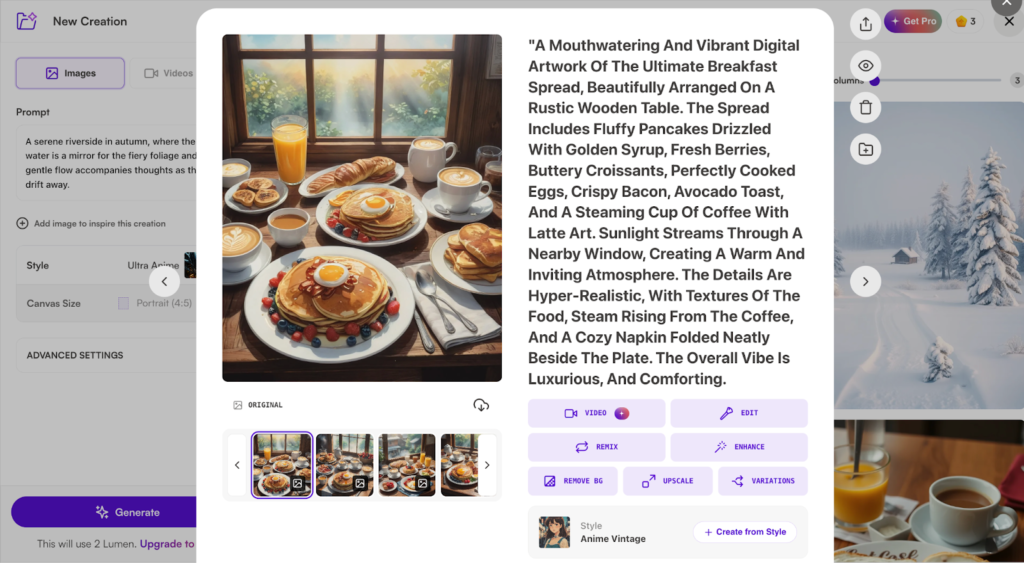
Why I picked starryai
starryai is one of the best AI art generators today because it can craft vibrant, customizable artworks in multiple varieties. It also has advanced features like Image Fusion, which is available even to free users. Additionally, the tool allows users to generate up to 25 images per day, supporting creative exploration.
Pros and cons
| Pros | Cons |
|---|---|
| Highly customizable | Less intuitive interface |
| Image Fusion feature | Slower image generation process |
| Wide range of artistic styles | Limited functionality in the free plan |
Pricing
- Free: 25 images per day
- Starter: $15 per month
- Unlimited pro: $35 per month
- Unlimited pro max: $95 per month
Learn more on starryai’s pricing page.
Features
- Image enhancement
- Magic Fusion
- Background removal
- Image upscaler
Midjourney
Best for Imaginative Artwork
Overall Rating: 4.1/5
- Core features: 4.5/5
- Cost: 2.8/5
- User protection and content moderation: 5/5
- Ease of use: 3.8/5
- Customer support: 5/5

Midjourney is a leading AI art generator that can create high-quality and visually striking artworks without the need for long, detailed text prompts. It generates several variations of an image per prompt, displaying different interpretations of your instructions and giving you more image options to choose from. One of Midjourney’s best features is the Blend command, which lets you upload multiple photos and merge them into a single image.
It also has advanced rendering techniques, allowing you to make images with rich textures and intricate details. Available via its website or Discord, Midjourney has a vibrant community with more than 20 million members that actively share feedback on generated images.
Midjourney’s extensive array of features and customization options, however, can be overwhelming, particularly to those new to AI art generation. Its image generation process also tends to be slower than some competitors. DALL-E 3 is a great alternative if speed and simplicity are your top priorities.
Product design and AI-generated output
Midjourney features a sleek, modern interface with easily accessible icons positioned on the left side and a text box for entering prompts. It offers a range of customization options that allow users to modify AI-generated images, including adjustments for image variations, upscaling, and the ability to reuse styles, prompts, or images. But while these extensive options are advantageous for advanced users, they may appear overwhelming to those with less experience.
In the example pictured below, the platform produced four variations, which all align with the given prompt. These images can be reused to design another image or make more variations of them.
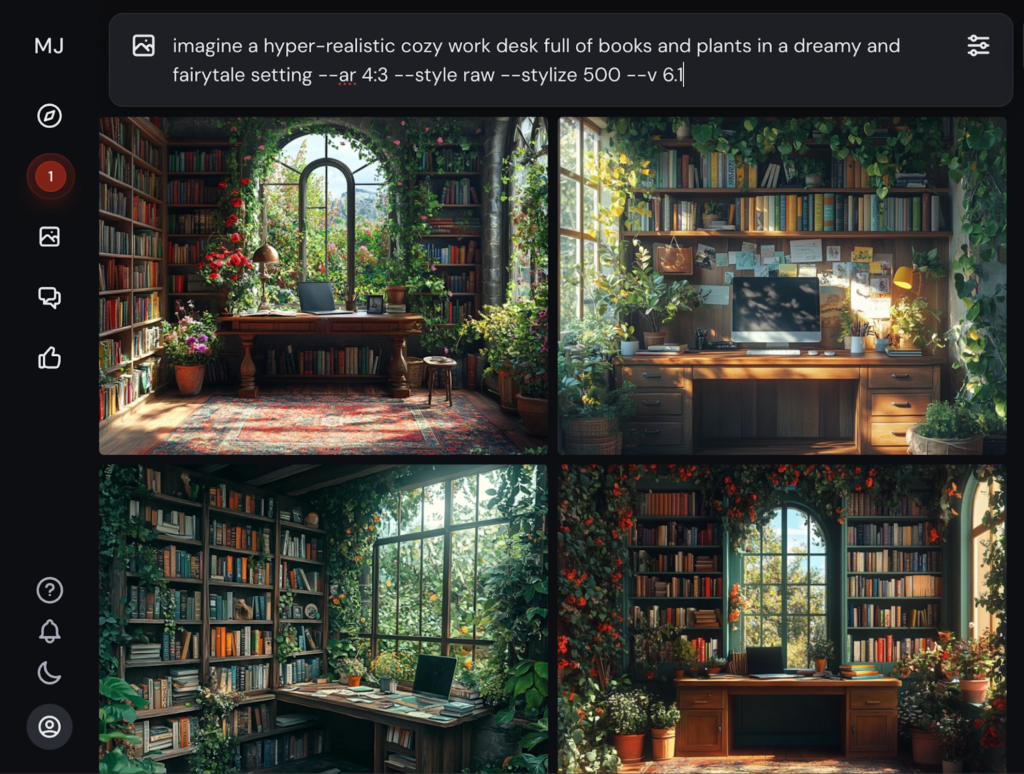
Why I picked Midjourney
I picked Midjourney as one of the best AI art generators because of its ability to produce intricate images. This AI art generator is also one of the few tools that can accurately create the desired image on the first try, even with complex prompts.
Pros and cons
| Pros | Cons |
|---|---|
| Highly detailed and accurate outputs | Comprehensive features can be overwhelming to beginners |
| Active user community | Limited image credits in free trial |
| Stealth mode keeps generated images private on the Midjourney website | Image generation process takes longer than competitors |
Pricing
- Basic: $10 per user per month
- Standard: $30 per user per month
- Pro: $60 per user per month
- Mega: $120 per user per month
Learn more on Midjourney’s pricing page.
Features
- Image prompts
- Image blending
- Midjourney Bot
- Shared spaces to collaborate with others
Leap AI
Best for Personal Design Projects
Overall Rating: 3.8/5
- Core features: 3.5/5
- Cost: 3.3/5
- User protection and content moderation: 5/5
- Ease of use: 5/5
- Customer support: 1.3/5
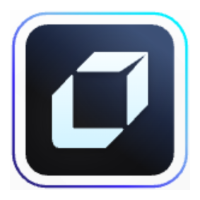
Leap AI has a built-in AI art generator tool specializing in creating visuals for personal projects. It can quickly produce images from keywords and offers different art styles, including abstract, sketch, and realistic, allowing you to craft content that matches your project’s theme and personal preference in seconds.
The platform has sample prompts you can tweak to get the result you want and allows you to generate multiple variations of an image. Leap AI’s outputs are clear and professional-grade, making them suitable for print, digital use, or personal collections.
On the flip side, Leap AI’s outputs generated with the free version come with watermarks, which can only be removed upon purchasing a subscription plan. It also occasionally struggles with interpreting complex prompts, and customer support can be rather unimpressive, offering slow response times and limited assistance. If you’re looking for an AI art generator with more reliable customer service and offers completely free-to-use images, consider starryai instead.
Product design and AI-generated output
Leap AI boasts a minimalistic interface that allows you to easily enter your text prompt and select your desired image orientation. You can also decide whether you want to prioritize speed or quality. Choosing speed will generate four images quickly, but with lower accuracy and basic design details. The quality option generates just one image, but with higher accuracy and more intricate details.
Leap AI’s AI-generated image is detailed, vibrant, and well-composed. The platform’s auto-enhance feature is particularly useful for users unfamiliar with crafting detailed prompts, as it refines simple inputs into more comprehensive suggestions that better capture your intentions. However, the output contained some noticeable errors, like unnatural warping in the image and inconsistent color elements.
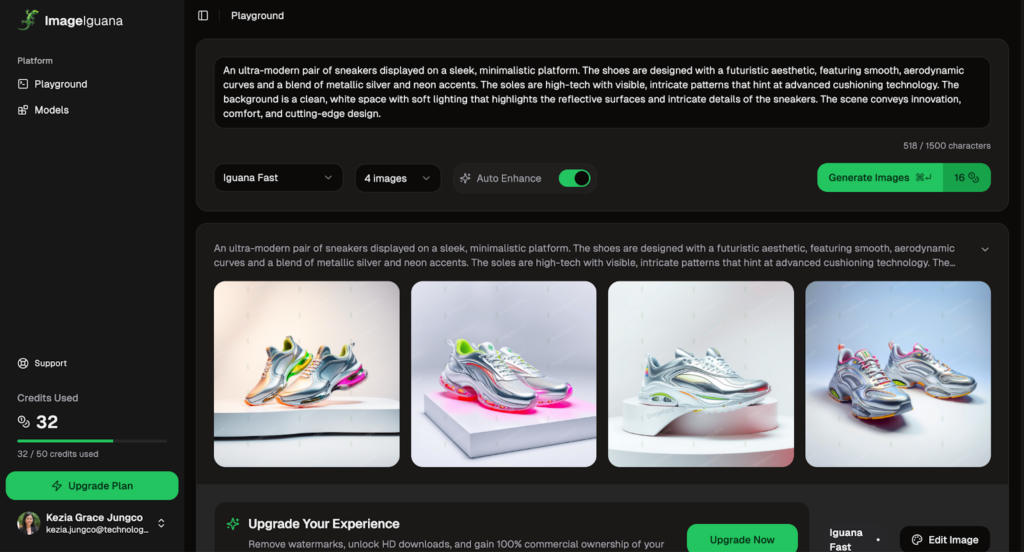
Why I picked Leap AI
I recommend Leap AI because of its exceptional ease of use and how quick it can quickly produce visually appealing outputs. Thanks to its simple interface and sample prompts, both hobbyists and professionals can effortlessly create images without expert knowledge.
Pros and cons
| Pros | Cons |
|---|---|
| User-friendly | Removal of watermarks on free AI-generated images requires a subscription |
| Fast image generation | Occasionally struggles with interpreting complex prompts |
| Highly detailed images | Limited customization options |
Pricing
- Free: Limited runs per month
- Pro: $99 per month
- Business: Custom pricing
Features
- Fast face generation
- AI image templates
- Sample prompts
- Image orientation
Prodia
Best for Building Content Libraries
Overall Rating: 3.4/5
- Core features: 2.8/5
- Cost: 5/5
- User protection and content moderation: 2.5/5
- Ease of use: 3.8/5
- Customer support: 2.5/5
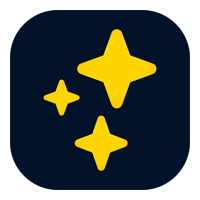
Prodia is an AI art generation platform that can produce images at a remarkable speed, making it suitable for building extensive content libraries. The platform relies on a robust backend infrastructure, which includes over 10,000 GPUs, allowing it to handle high-demand requests without compromising performance.
Additionally, it offers a selection of AI models that let you generate images in a specific artistic style — a feature that is ideal for those who are looking to maintain a consistent and cohesive brand identity across their content library.
Using Prodia requires some previous experience using various AI models. It also has higher inaccuracies than most tools in interpreting and following text prompts. For an accurate and user-friendly AI art generator, consider DALL-E 3.
Product design and AI-generated output
Prodia has a modern and uncluttered layout, with just a few but important image customization options. While the interface is easy to navigate, it can still be challenging to work with, as it requires selecting an AI model and understanding each model’s style to generate the intended image output. The AI art generator created one stunning image, but it has some inconsistencies in structure and details, like texture blending.

Why I picked Prodia
I recommend Prodia because of its speed and scalability, which promote efficient image generation, even without high-powered and expensive infrastructure. This allows small organizations and casual users to integrate high-quality AI-generated art into their projects.
Pros and cons
| Pros | Cons |
|---|---|
| Rapid image production | Inaccuracies in the generated output |
| Multiple AI models | Requires familiarity with different AI models |
| Image templates | Inconsistent output quality |
Pricing
- Free version: Suitable for testing and low-volume users
- Pro plan: $5 per month + usage costs
- Enterprise plan: Custom pricing
Learn more on Prodia’s pricing page.
Features
- Fast image generation
- Generative image API
- Different image styles
- Multiple generative AI models
Jasper Art
Best for Marketing Image Generation
Overall Rating: 3.3/5
- Core features: 3.8/5
- Cost: 2.3/5
- User protection and content moderation: 2.5/5
- Ease of use: 5/5
- Customer support: 3.8/5
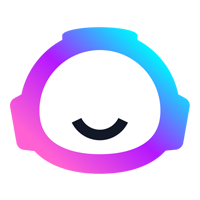
Jasper Art is an AI art generator ideal for marketing businesses and professionals, thanks to its integration with the Jasper AI platform. This tool can produce captivating images based on textual and visual input, eliminating the hassle of searching through stock photos or paying for design services.
The platform lets you create custom images based on your input or use one of its predesigned templates to save time and effort. It generates royalty-free images that are free to use, distribute, and save, making them suitable for various marketing applications, such as video thumbnails, website images, and ads.
On the downside, Jasper Art does not have a free version and has a short free trial duration. Select starryai if you want an AI art generator with a free version.
Product design and AI-generated output
Jasper Art has a simple interface that lets you type in your text prompt and upload a reference image. It also has dropdown menus so you can select the image’s mood, medium, and style, increasing ease of use.
This AI art generator created four highly detailed, colorful images based on my prompt. While these outputs look good, the tool took a few tries to get the details right.

Why I picked Jasper Art
I picked Jasper Art because of its user-friendly interface and versatile features. The tool is easy to use for beginners and experts alike. It also lets you select from different moods, styles, and mediums to enhance your images further.
Pros and Cons
| Pros | Cons |
|---|---|
| Ready-to-use templates | No free version |
| Fast image generation | Struggles with complex prompts |
| High-quality images | Occasional output inaccuracies |
Pricing
Jasper Art is a feature included in the following plans:
- Creator: $49 per user per month
- Pro: $69 per user per month
- Business: Custom pricing
Learn more on Jasper’s pricing page.
Features
- High-resolution images
- Diverse styles
- Unlimited generations
- AI chat
6 key features of AI art generators
Six key features define the effectiveness of AI art generators. These include high-quality image generation, style diversity, prompt alignment, rapid production, customization tools, and output consistency. Each feature contributes to the AI tool’s usefulness, empowering artists and designers to create professional-grade visuals.
High-quality image generation
The ability to produce stunning, high-resolution images is a fundamental feature of AI art generators. Image quality is of utmost importance, especially if the photos will be used in a professional setting, where clarity and precision are essential.
Style diversity
Style diversity allows the AI tool to mimic various artistic styles, such as impressionism and surrealism. This capability lets you create works of art that adhere to particular themes or aesthetic traditions.
Prompt alignment
This feature refers to how accurately the AI art generator translates your textual input into visual output. The best AI art generator creates an image that aligns with your vision and does not need you to enter more prompts require loads of further enhancements.
Rapid production
Rapid production is important for creating visuals quickly, whether to meet tight deadlines or generating large volumes of images. This feature boosts efficiency by letting you experiment with different ideas and craft multiple outputs in a short amount of time. It’s especially beneficial when working on projects that require a high volume of consistent images, enabling you to maintain productivity without sacrificing quality.
Customization tools
With built-in customization tools, you can adjust several aspects of the AI-generated images, such as orientation, texture, and composition. This functionality is imperative for personalizing outputs and making sure that the final images meet the specific design requirements.
Output consistency
This feature ensures that the AI art generator produces reliable and predictable results across multiple uses. Consistency is of utmost importance in preserving the quality and coherence of a series of images, especially in professional settings where uniformity is often required.
How I evaluated and tested AI art generators
To determine the best AI art generators and ensure a fair assessment, I evaluated each tool across five key criteria: core features, cost, user protection and content moderation, ease of use, and customer support. I systematically scored each tool in these categories based on specific performance metrics and then aggregated these scores to establish final rankings.
To thoroughly test the AI art generators platform, I signed up for a free plan or subscribed to a paid plan to use each tool. I systematically tested several prompts, explored different features, and refined my inputs through multiple iterations until achieving my desired output.
- Core features (30 percent): To measure the scores for this criterion, I considered each tool’s high-quality image generation capacity, speed, accuracy, style diversity, and consistency. I also factored in customization features, batch processing capability, multiple output format availability, and tool accessibility.
All these features directly influence the creative possibilities and output quality, making them the backbone of any AI art generator.
Criteria winner: Midjourney
- Cost (25 percent): I considered several factors for this category, including the availability of a free tier, the duration of free trials, and the transparency of pricing models. Additionally, I evaluated the free usage limits and whether the generated outputs can be used without restrictions, such as hidden fees or watermarks.
Knowing these details is important so you can make informed decisions and ensure you get fair access to the AI art generator’s features without encountering unexpected costs or limitations.
Criteria winners: Stable Diffusion, Prodia, and starryai
- User protection and content moderation (20 percent): I checked for any intellectual property protection or clear ownership information for each AI art generator. I also researched moderation features to prevent misuse, such as generating harmful or inappropriate content. These aspects protect you from potential risks and help maintain a responsible and secure environment for creative AI exploration.
Criteria winners: Multiple winners
- Ease of use (15 percent): For ease of use, I gauged how simple it is to set up the tool, whether installation is required, and how easy it is to navigate. This entailed analyzing whether the tool is ready to use immediately without installation, available as both an online and installable tool with a simple process, or only available with a more complex set-up.
I also considered how user-friendly and intuitive the interface is, especially for those with no prior experience. This is another key category because it affects how quickly you can use the tool without being hindered by complicated installation processes or a steep learning curve.
Criteria winners: Jasper Art, Canva, and Leap AI
- Customer support (10 percent): For this category, I considered the availability of live chat options for both free and paid users, the support available through email or ticket systems, the presence of an active community for assistance, and the quality of knowledge bases or documentation.
Effective support channels, active user communities, and robust documentation provide timely help and problem resolution, enabling you to maximize the tool’s potential.
Criteria winners: DALL-E 3 and Midjourney
Frequently asked questions (FAQs)
The best AI art generator will depend on your specific use case. But based on my rigorous research, Stable Diffusion is the best AI image generator today. It produces vivid and striking images with reliable accuracy and has strong user protection policies. It also offers a free version for researchers, small businesses, and non-profit organizations.
AI art generators are not illegal, but their use may violate copyright laws if the generated images infringe on existing copyrights. While the tools are legal, the art produced poses a different concern, though there are already ongoing lawsuits addressing these concerns.
In my in-depth comparison of the two AI image generators, I found that Midjourney outperforms DALL-E in core image generation, delivering superior visuals and customization options. Meanwhile, DALL-E excels in other areas, with better pricing, ownership rights, and customer support—all while having a user-friendly interface and generating beautiful images.
Bottom line: How to choose the best AI art generator for your needs
The best AI art generators allow creators to craft high-quality visuals quickly and efficiently. These tools help you visualize your ideas and refine them by allowing you to enter detailed text prompts and adjust the resulting image. They also come with predefined art styles, letting you experiment and see different interpretations of what you envisioned. Whether you’re a professional artist or a beginner, AI art generators can help streamline your artistic process.
Analyzing all available options can be overwhelming, which is why I put this guide together to help you find the best AI art generator that fits your needs. When choosing an AI art generator, pay attention to core features like accuracy (how close is the image to what you described in the prompt or how close to the real thing is the subject in the image), available style options, image quality, and whether the tool upholds copyright laws.
AI is making waves across multiple sectors; read our article on top AI companies to discover the innovators driving change in the industry.
